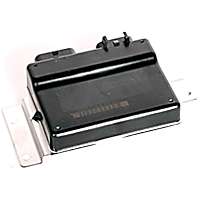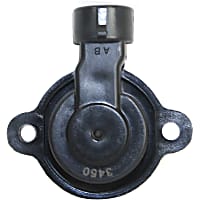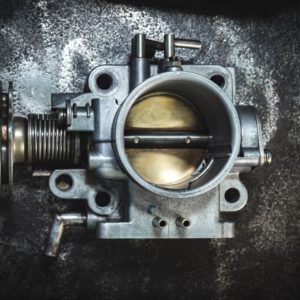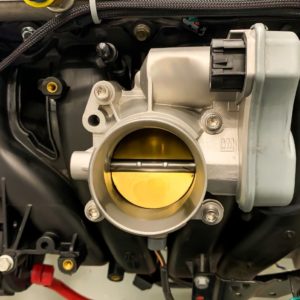Error code P2101 is a generic diagnostic trouble code (DTC) related to your vehicle’s electronic throttle control (ETC) system.
What Does the P2101 Code Mean?
Diagnostic Trouble Code (DTC) P2101 stands for Throttle Actuator “A” Control Motor Circuit Range/Performance. It is usually triggered when your vehicle’s powertrain control module (PCM) detects that the actual throttle position does not match the desired throttle position. Once this happens, your PCM may put your engine in “limp home mode” to prevent unwanted acceleration.

On a GM vehicle, this code can mean one of two things:
- The ECM detects the actual throttle position does not match the predicted throttle position for greater than 1 second.
- The ECM detects the throttle control is driving the throttle in the incorrect direction or exceed the reduced power limit.

Nissan describes the P2101 this way:
- Electric throttle control actuator does not function properly due to the return spring malfunction.
- Throttle valve opening angle in fail-safe mode is not in specified range.
- ECM detect the throttle valve is stuck open.
Ford describes the P2101 like this:
- TAC motor circuits are cross wired
- Intake air system restrictions
- Throttle plate restrictions
Electronic Throttle Control System (ETC)
To understand the code better, we have to discuss the basics of an ETC system. Basically, your vehicle’s ETC system controls your throttle valve opening. Your PCM then uses input from Accelerator Pedal Position (APP) sensors and throttle position sensors when analyzing ETC operations, including how to adjust the throttle position.
Your vehicle’s throttle plate will open and close according to the signal sent by your vehicle’s PCM. The P2101 code will trigger once the PCM detects that the electronic throttle actuator is not following commands. For example, when the throttle is not opening accordingly.

It is important to remember that, while the throttle plate is spring loaded to the closed position, when the key is switched on (regardless of whether the engine is running or not), the electronic throttle body motor drives the throttle plate in both directions – it doesn’t just open the throttle – it actually closes it, and it does so with tremendous force, so keep your fingers out of it at all times.
That being said, the throttle plate is spring loaded for a reason, and when the throttle body motor isn’t driving the plate one way or another, the ECM/PCM or module will expect the spring to close the throttle plate. If it doesn’t, the P2101 code can be set for that reason.
What are the Possible Causes of the P2101 Code?

While it varies from one manufacturer to another, a diagnostic trouble code P2101 can be triggered by any one of these (and/or other) causes:
- APP sensor failure
- Throttle position sensor failure
- PCM malfunction
- Throttle control motor (throttle body) malfunction
- Open, short, or high resistance circuit to the throttle actuator
What are the Common Symptoms of the P2101 Code?

But aside from that, here are other symptoms related to the code:
- Illuminated Malfunction Indicator Lamp (MIL) or Check Engine Light
- Fixed Idle Speed
- Decreased engine performance/inability to accelerate properly
- Vehicle stuck in Reduced Power or limp mode
How to Diagnose the P2101 Code
Some very important reminders below if you wish to diagnose the P2101 yourself:
- Don’t ever open the throttle body with your fingers, even with the engine switched off or with the throttle body removed. On some vehicles, this can ruin the throttle body mechanism so that it has to be replaced. Always have an assistant hold the throttle pedal down to open the throttle plate.
- NEVER clean the throttle body with your fingers or put your fingers into the throttle body for ANY REASON. Always use a brush, because if the throttle body plate is driven closed (like if the assistant releases the pedal) the throttle body could seriously injure your fingers. Keep your fingers out of the throttle body at all times.
Since there are so many possible causes of code P2101, it may be difficult to pinpoint what exactly is triggering this code for your specific make and model. It is always the best option to bring your vehicle to an auto repair shop to have it diagnosed properly.
However, if you are well-versed in automotive repair and you want to find out the underlying cause yourself, here is a video you can watch to help you understand the code better:
How to Fix the P2101 Code
Fixing any OBD-II code can be tricky as there is no universal fix available for any code. P2101 is no exception. The exact solution for this code will depend on your vehicle’s specific make and model. For example, the fix for a P2101 code in Nissan may differ from a P2101 code in Chevy.
If you are confident with your DIY automotive skills, you can use online auto repair sources and guides to determine the right fix for your vehicle. If you prefer, you may also get an ALLDATA single-vehicle subscription.
Don’t forget to read your vehicle’s manual before doing any repair. If you’re unsure about anything, contact a trusted professional.
Get a Replacement APP Sensor That Fits Your Car
Driving around with a faulty APP sensor isn’t just a hassle, it’s also dangerous. A malfunctioning APP sensor is likely to cause poor pedal timing, which can make it hard to accelerate when you need to. This might put you at greater risk of getting into collisions, so it’s best to replace your faulty APP sensor as soon as possible. Luckily, getting a new APP sensor is fast and easy with CarParts.com.
You don’t have to worry about long delivery times as CarParts.com guarantees fast shipping. Thanks to our strategically located warehouses around the US, you can get your brand-new APP sensor in as fast as two business days. Placing an order only takes a few clicks too. Just enter your vehicle’s year, make, and model in our vehicle selector, and you can browse through our wide collection of high-quality parts.
Don’t wait until your APP sensor completely breaks before getting it replaced. Buy a brand-new APP sensor at CarParts.com today.
Products Mentioned in this Guide
Any information provided on this Website is for informational purposes only and is not intended to replace consultation with a professional mechanic. The accuracy and timeliness of the information may change from the time of publication.



 Throttle Actuator
Throttle Actuator
 Throttle Position Sensor
Throttle Position Sensor

















Thank for this! This explanation will help me trouble shoot!